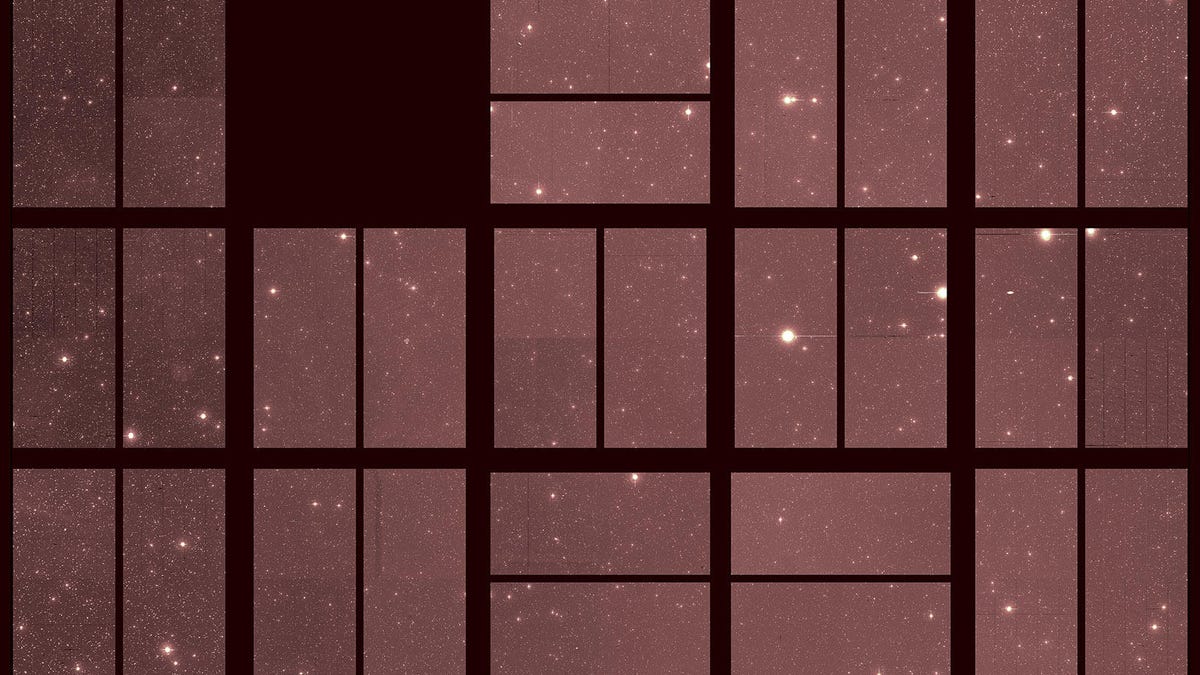Here's the magnificent last view NASA's Kepler Space Telescope ever saw
The prolific planet finder went to sleep for good last year, but captured one final view before saying goodnight.

A composite image of Kepler's final view. The missing tiles are due to parts of the camera that failed.
The final thing NASA's Kepler Space Telescope captured was everything, or at least it looks that way.
NASA ran out of fuel last year and was put into a permanent sleep mode on Oct. 30. The final full-field image it took can be seen in the above mosaic captured Sept. 25. You can see the telescope's full view of the sky and an abundance of stars within.
Some blocks of the composite image are blacked out due to failures by parts of the camera. Fortunately, the device had a modular design that allowed for other parts of the image to be retained.
Kepler helped revolutionize how we think about the universe by enabling the discovery of thousands of exoplanets beyond our solar system, making it clear our galaxy and others are packed with other worlds.
Kepler's view of K2-138 with its six planets sized between Earth and Neptune. It was the first multi-planet system entirely discovered by citizen scientists.
But it struggled to make some of those discoveries. A few years into its mission, the parts that help it stay pointed at a target began to fail. Engineers had to come up with a work-around that basically used the subtle pressure coming off the sun itself to keep the telescope steady. Kepler went on making more finds for half a decade before finally running out of gas.
To the right is one of the later star systems Kepler helped discover called K2-138. It is believed to host six planets roughly between the sizes of Earth and Neptune. The GIF shows images collected of the system during Kepler's last day of photography.
The pixelated view might not be much to look at, but Kepler played a pivotal role in pointing the way towards promising systems like this so that future telescopes might provide a clearer view one day, and perhaps even find evidence of alien life.
NASA turns 60: The space agency has taken humanity farther than anyone else, and it has plans to go further.
Crowd Control: A crowdsourced science fiction novel written by CNET readers.

